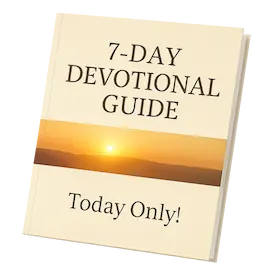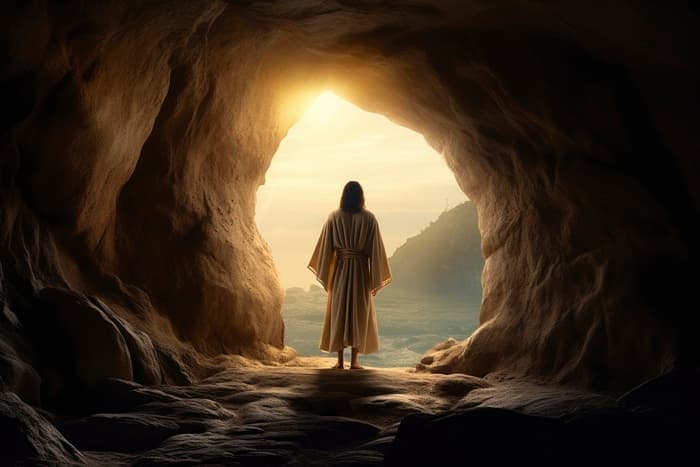Other Names for Hell
Before we go into fire and judgment, we’ve got to clear something up: the description of hell in the Bible is complex. There isn’t just one word for Hell. There are several, and they don’t all mean the same thing.
If someone says “Hell” today, they might picture Dante’s Inferno, eternal flames, or a lake of lava. But in the original languages of the Bible (Hebrew and Greek), the words translated as “Hell” come with way more nuance.
1. Sheol (Hebrew Bible / Old Testament)
In the Old Testament, the first record of a hell-like place was Sheol. It’s not Hell as we imagine it, but more of a shadowy underworld, a kind of cosmic basement where the dead simply exist. It’s where everyone ends up. Righteous or wicked, faithful or corrupt, kings and beggars alike
“What man can live and never see death? Who can deliver his soul from the power of Sheol?” - Psalm 89:48
There’s no clear sense of torment, and there’s also no joy. It’s more like being forgotten, cut off from the living and (at least seemingly) from God.
In some ways, Sheol is closer to the idea of a sleeping place, a quiet waiting room for the dead. You see this reflected in phrases like “he was gathered to his people,” which shows up when patriarchs like Abraham or Jacob die.
2. Hades (Greek New Testament)
In the New Testament, when Jesus talks about Hell, the Greek word often used is Hades. At its core, Hades is the Greek version of Sheol, the realm of the dead. But by the time the New Testament was written, things were different.
That’s largely due to Greek cultural influence. After Alexander the Great’s conquest of Jerusalem in the 4th century BC, Greek philosophy, myths, and spiritual ideas started making their way into Jewish thought.
In this context, the concept of Hades evolved. It was no longer just “a graveyard-type place, it started to resemble the Greek underworld: a shadowy realm where souls awaited judgment, sometimes with suffering involved.
This shift shows up in some later Jewish texts too, like 1 Enoch, where the afterlife is more sorted out, with righteous and wicked souls going to different places. That cultural cross-pollination helps explain why, in Luke 16, Jesus describes a rich man being in torment in Hades, while Lazarus rests nearby with Abraham.
But it’s important to note that this is not a soul’s final destination. In the Book of Revelation, even Hades itself gets thrown into the lake of fire (Rev. 20:14). So, Hades is more of a temporary holding zone in the biblical timeline, not the ultimate place of judgment.
3. Gehenna
Now this one’s intense. Gehenna is the term Jesus uses most often when warning about judgment and destruction.
Gehenna was a real place, a valley outside Jerusalem (the Valley of Hinnom), where garbage and sometimes even dead bodies were burned. It had a grim reputation, thanks to some dark chapters in Israel’s history involving child sacrifice.
When Jesus says things like “cast into Gehenna,” his audience wasn’t thinking of a mystical underworld. They were picturing something close to home. Something vile, cursed, and permanently outside the city of God’s people.
“If your right eye causes you to sin, gouge it out... It’s better for you to lose one part of your body than for your whole body to be thrown into Gehenna.” - Matthew 5:29
Gehenna became a symbol of divine judgment, a fiery warning that carried real emotional weight for the people listening.
4. Tartarus
Tartarus only shows up once in the entire Bible, and it’s not about human souls.
“For if God did not spare angels when they sinned, but cast them into Tartarus and committed them to chains of gloomy darkness to be kept until the judgment...” - 2 Peter 2:4 (Greek text)
In most English translations, this gets softened to “hell” or “gloomy dungeons”, but the actual Greek word here is Tartaroō, a direct pull from Greek mythology.
In Greek myth, Tartarus was the deepest part of the underworld, way below Hades. It was a place of extreme punishment reserved for rebellious gods, like the Titans, who fought against Zeus.
When Peter uses the word Tartarus, he’s tapping into an image that would’ve been immediately familiar to people in the Greco-Roman world: a dark, locked-away abyss for supernatural beings who crossed some universal line.
This is a place where rebellious angels are being held until the final judgment. It echoes ideas from apocalyptic Jewish literature (like 1 Enoch), which also describes fallen angels being chained in gloomy pits after rebelling against God.
What Do These ‘Hells’ Have in Common?
When we ask “What does Hell look like?”, the answer depends on which word we’re looking at. These “hells” are not all interchangeable, and that matters. If we lump them together, we risk missing the deeper point the Bible is trying to make. Not just about what happens after death, but about how we live before it.
Early Christian writers weren’t afraid to borrow language from surrounding cultures when it helped explain something. For example, Peter’s readers probably weren’t familiar with Sheol or Gehenna, but they definitely knew what Tartarus meant.
So when we ask, “How does Hell look like?”, the better question might be: “Which part of the story are we in?”
 Representation of Sheol (image generated with Midjourney)
Representation of Sheol (image generated with Midjourney)
Fire, Darkness, and... Worms?
If there’s one thing that sticks in people’s minds about Hell, it’s the imagery. A biblically accurate hell seems to be a pretty frightening experience.
For starters, the fire element shows up again and again in descriptions of divine judgment. Jesus says things like:
“It is better for you to lose one part of your body than for your whole body to go into hell (Gehenna).” - Matthew 5:30
“...where the fire never goes out.” - Mark 9:43
And in Revelation, we get the dramatic “lake of fire” (Rev. 20:10) where the devil and those aligned with him are thrown at the end of time. Despite the dramatic scenery, in the Bible, fire isn’t always about literal burning. Sometimes it’s about refining, judging, or destroying something completely.
Hell is also described as “outer darkness” where there is “weeping and gnashing of teeth” (Matthew 8:12). That’s a pretty different image from a flaming inferno, and yet it’s used just as strongly.
So, how can Hell be full of fire and total darkness? The Bible may be using contrasting images to communicate a deeper reality. Hell isn’t just physical suffering, it’s also isolating, disorienting, and deeply lonely. It’s outside the joy, presence, and light of God.
Fire might show us destruction.
Darkness shows us abandonment.
But, perhaps one of the most unsettling characteristics of hell is the mention of worms:
“...where their worm does not die and the fire is not quenched.” - Mark 9:48 (quoting Isaiah 66:24)
In Isaiah’s context, it’s describing the corpses of the defeated outside the city: a place of shame and abandonment. The worms represent decay that doesn’t stop. It’s the opposite of closure.
Everything just keeps rotting, endlessly.
It’s grim, but again, the point isn’t the biology. It’s the emotional and spiritual weight behind it: what happens when life is cut off from its source for good?
Get Closer to God Today
4.9
Average Rating
|Over 5 Million Downloads
The Big Split: Forever Torment or Final Goodbye?
The question that has sparked centuries of theological wrestling, debate, and more than a few awkward church conversations is probably: Is Hell forever?
If you want to find a clear answer in the Scripture, prepare to be disappointed, because the Bible isn’t as cut-and-dry as some might think. Faithful, Bible-loving Christians have landed in three very different camps when it comes to what Hell is and what it leads to.
First, there’s the traditional view: eternal conscious torment. This is the classic image most of us grew up with. In this view, Hell is permanent and personal. People remain fully aware for all eternity, experiencing regret, separation from God, and ongoing suffering.
Verses like these are often cited in support:
"They will go away to eternal punishment, but the righteous to eternal life” - Matthew 25:46
The idea is that the stakes are as high as they come. Permanent decisions. Permanent outcomes.
But not everyone reads it that way.
Another long-standing interpretation is annihilationism, also called “conditional immortality.” This view holds that those who reject God don’t suffer forever...they simply cease to exist.
It’s eternal punishment in the form of final destruction, not eternal pain. Supporters of this view often point to verses like Matthew 10:28 - “Fear him who can destroy both soul and body in hell” - and the repeated use of words like “perish” and “destruction” in New Testament judgment language.
Then there’s a third view, more controversial but still rooted in Scripture: universal reconciliation. In this view, Hell is real, but it’s not forever. It’s corrective. Purifying. Painful, yes, but with the ultimate aim of healing and restoration. Over time (even if it takes a long, long time), all souls will be reconciled to God.
It leans heavily on verses about God’s desire that “none should perish” (2 Peter 3:9) and Jesus drawing “all people to Himself” (John 12:32). This idea isn’t mainstream in most denominations, but it has been held by early church fathers like Gregory of Nyssa.
So… who’s right?
Honestly, that depends on which Scriptures you emphasize, how you understand words like “eternal” (which, by the way, can also mean “of the age” or “lasting result” in Greek), and how you see the character of God.
The bottom line is that the Bible speaks clearly about judgment, but not always with the clarity we expect when it comes to the duration or experience of Hell. And that ambiguity has opened the door to different (and still biblically faithful) interpretations.
What all three views agree on, though, is this: our choices matter, and turning away from God has serious consequences. Whether that means torment, destruction, or correction, the warning is there for a reason.
Representation of a soul separated from God (image generated with Midjourney)
Final Thoughts...What is Hell?
If you came here expecting a straightforward blueprint of Hell… well, sorry to disappoint. But hopefully, what you found instead is something deeper, and maybe even more important.
We’ve seen that the Bible doesn’t give us just one image of Hell. Instead, it offers a layered picture built from ancient words like Sheol, Hades, Gehenna, and Tartarus (each with its own history, symbolism, and emotional weight).
So if you’re still intrigued by what hell looks like, then maybe this article answered some questions. For me, hell is separation from the One we were made for. It’s not just about punishment. It’s about the heartbreak of choosing something, anything, over God, and then living (or not living) with that decision.
If this topic stirred something in you or if you’ve still got questions (and honestly, who wouldn’t), you don’t have to stop here. The Bible Chat App is a space where you can ask those honest, hard questions and get thoughtful, Bible-based answers.
Because sometimes, the answers that matter most aren’t the loudest. They’re the ones you sit with, pray through, and explore one verse at a time.
References
The Holy Bible, New International Version. Zondervan, 2011.
MacArthur, John. The MacArthur Bible Commentary. Thomas Nelson, 2005.
Sproul, R.C. Essential Truths of the Christian Faith. Tyndale House, 1992.
Fox, Robin Lane. Alexander the Great. Penguin Books, 2006.










